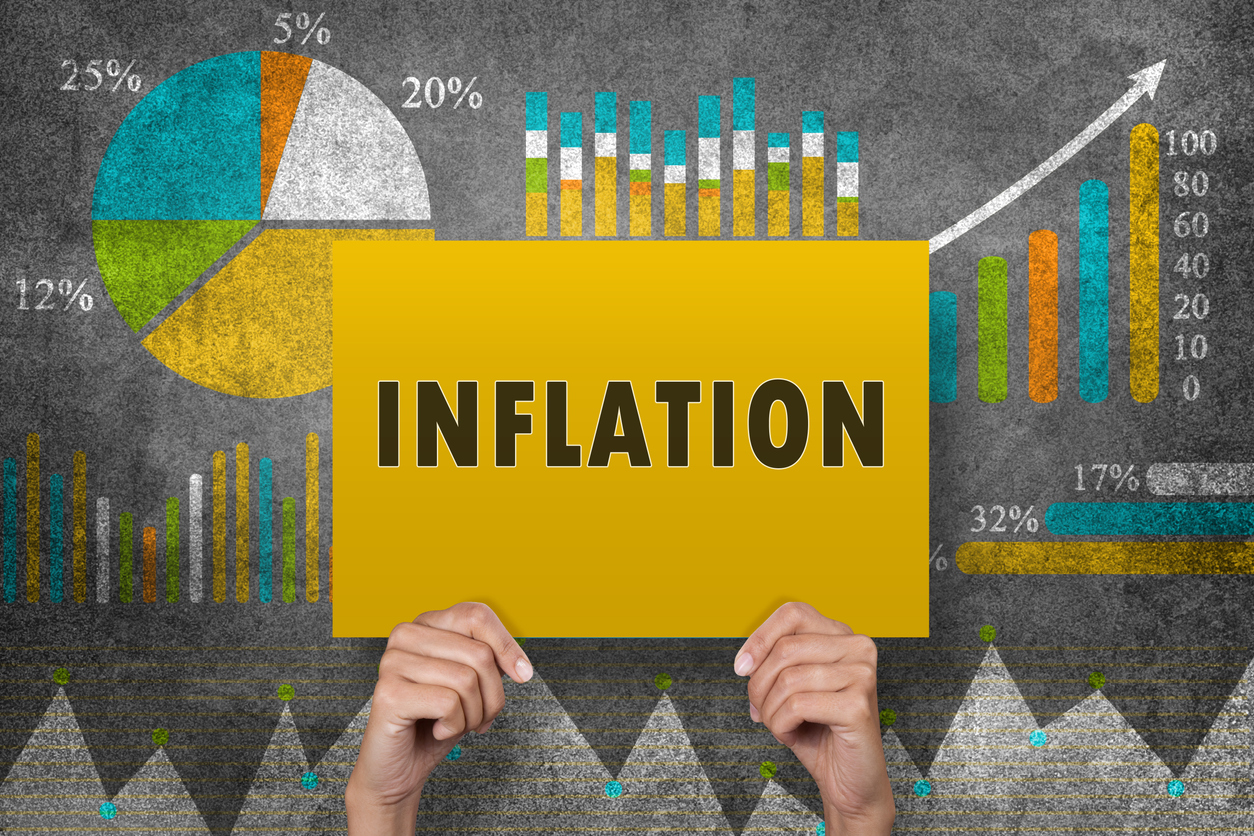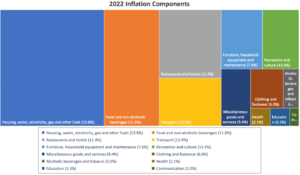
Annual inflation in 2022 was 10.5%, but not all components rose by double digits.

Source: ONS.
Annual inflation, as measured by the Consumer Prices Index (CPI), was 10.5% in 2022 against 5.4% in 2021. The official CPI calculator, the Office for National Statistics (ONS), says that the last time inflation was as high was in 1981. But what drove the inflation indices to four-decade highs last year? As is often the case, a simple economic question does not lead to a straightforward answer.
The hierarchy graph above offers a visual response:
- The ONS CPI inflation ‘basket’ contains 12 categories, each with different weights (see figures in brackets) based on typical household expenditure. In 2022, the second largest category of spending, Housing, Water, Electricity, Gas and Other Fuels, recorded an increase of 26.6%. Unsurprisingly, the star performer was gas prices, which rose 128.9% across 2022. That alone was worth a 1.8% rise in the CPI. Electricity prices jumped by 65.4%, adding another 1.3% to the CPI.
- The next largest contributor to inflation, with a slightly smaller weighting in the basket, was Food and Non-Alcoholic Beverages, which rose by 16.8% over the year. The ONS says this category’s annual inflation has increased for 17 consecutive months (from -0.6% in July 2021) and is now at 1977 levels. It accounted for 1.95% of CPI inflation.
- In 2022, the category with the largest weighting in the CPI basket, Transport, played a less significant role in terms of overall inflation (0.9% on the CPI) than it did last year. Over the year, the category’s inflation was 6.5%. In June, annual transport inflation was nearly 15%, driven by the rise in petrol and diesel prices. As these fell back, so too did the transport inflation rate.
- The category with the lowest inflation (2.0%) was also the one with the second lowest basket weighting – Communications – so did little to counter the sharp rises elsewhere.
The two main causes of 2022 inflation – food and gas prices – help to explain why inflation is expected to drop sharply in 2023. Both rose in response to the war in Ukraine and as that is now a year ago, prices should start to stabilise – indeed wholesale gas prices have fallen from their peaks.
The consensus is for the annual CPI number to end the year around 5%, less than half of 2022’s level but still enough to mean any long-term financial plans need to build in the value-eroding effects of inflation.
If you would like to discuss the above further, please speak to one of our Financial Planners here.
The value of investments and the income they produce can fall as well as rise. You may get back less than you invested. Past performance is not a reliable indicator of future performance. Investing in stocks and shares should be regarded as a long term investment and should fit in with your overall attitude to risk and your financial circumstance.





